Highlighting a Trio of Taiwan-based PTW Makers and Their Strategies
2008/10/20 | By Quincy LiangDespite having built a solid reputation for high quality, innovation, and rapid market response, powered two-wheeler (PTW) makers in Taiwan have been pressured on two fronts. One is the combination of spiraling fuel prices and tightened credit market after the sub-prime mortgage crisis stateside, which likely pinches sales of PTWs that are often recreational vehicles bought with disposable cash; while a recent news report says that inflation together with record fuel prices are also making Europeans poorer. The other is a repetitive story: emerging PTW makers have been tapping global markets by underselling, which tends to hit Taiwan counterparts' Achilles' heel for they are not known for offering rock-bottom prices.
The upstart PTW rivals have been encroaching on Taiwan PTW makers' turf for a while, a trend that the latter has been countering. Taiwan-based suppliers, being known for their resourcefulness and knack for finding new market niches, have been adopting various strategies to ride out the more challenging times. In the past few years, a group of local PTW makers have adopted division-of-labor programs: typically moving volume but low-rung manufacturing to China to optimize cost advantages and yet still uphold quality. World-class design studios have been brought onboard to brainstorm, tweak existing models for upgraded product content. They have also carved niches in limited, higher-margin, but less-competitive segments.

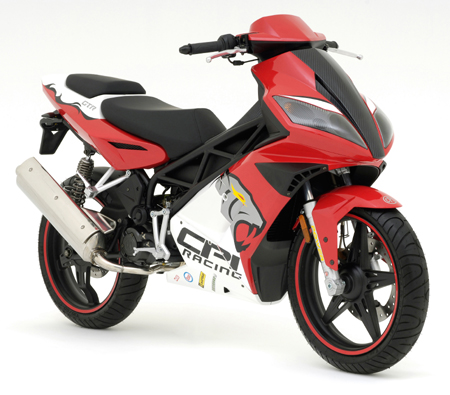
The above efforts to fend off underselling rivals have borne fruit for many, while the ever-changing market forces will continue to test Taiwan PTW makers' will and ingenuity to take on new challenges, transforming and changing tactics over the next few years. One constant in the PTW trade is that emerging mainland Chinese rivals will not detour from their usual ways, which is to watch closely Taiwan counterparts for cues that will be copied, hence forcing the latter to always be on their guard to improve and break new ground.
European Design, Market Positioning
For a long time in Europe and North America, CPI Motor Co.'s round, red logo encircling "CPI" had been a renowned PTW and engine brand from Taiwan, but fierce price-cutting competition from China etched away its global sales.
By adopting effective counter strategies in the past few years, CPI has regained competitiveness in different segments with clear market positioning, including top-end scooters, mass-produced light scooters, and high-end dirt bikes.

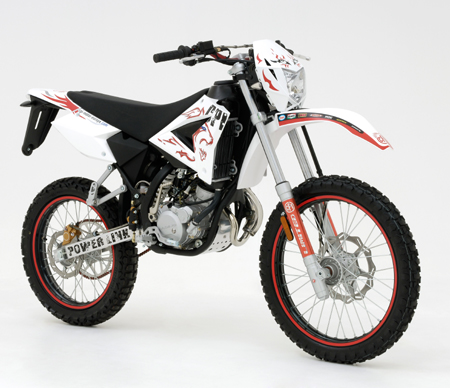
Irene Liu, CPI's sales director, sums up the company's strategy to compete against underselling rivalry in the global market: clearly identify target markets and promote suitable products. Few years ago, CPI contracted globally renowned design studios in Europe to help CPI go upmarket, which would fatten margins. The European designers came up with appealing, high-end models that are currently produced in CPI's Taiwan plant; while the company continues to turn out at its mainland Chinese factory cost-competitive scooters displacing up to 125cc.
"Having devoted considerable effort in the past few years to product design, development as well as setting up well-structured division-of-labor manufacturing on both sides of the Taiwan Strait," Liu claims, "now CPI offers wide-ranging product lines, in which each model occupies clear market position."
GTR-PTW with Dual Personalities
One of CPI's major product achievements under the European design program is the upscale crossover (motorcycle-and-scooter) GTR series, which was introduced in 2005. Designed by a famous European design studio, the GTR has captured the attention of global riders with its unique blend of the main characteristics of motorcycle and scooter. With the basic styling concept being motorcycle based, complete with bigger wheels, the GTR however shows many scooter elements when viewed from the front.
GTR is a pioneering hybrid, one that integrates motorcycle and scooter, Liu claims, with the vehicle featuring the best of two worlds: easier steering of a motorcycle and the convenience, comfort of a scooter's continuous variable transmission (CVT). In addition, Liu adds, the 50cc GTR has an advanced, water-cooled engine developed an Austrian R&D team, making it more powerful and compatible with the latest emission standards in Europe. The GTR is available with 50cc, 150cc, and 180cc engines.
Another CPI's upmarket product line is its Supermoto and Supercross dirt bikes, which feature the same frames and engines, but are available with options for city or off-road riding.
Mostly of Lightweight Aluminum
Liu says that the high-end Supermoto and Supercross widely adopt aluminum alloy, including handle bar, suspension system, wheel etc. Styled by a renowned European design studio, these bikes feature high-performance 50cc engine that is more powerful than most counterparts. In addition, CPI recently launched the 250cc Supermoto and Supercross to serve professional and enduro riders.
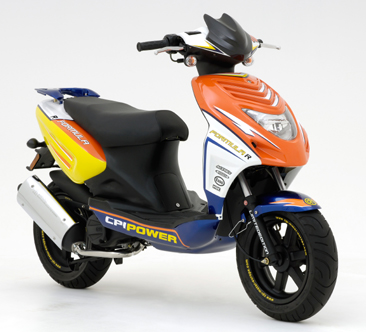
CPI's division-of-labor manufacturing program is designed to fend off underselling by optimizing cost efficiencies: all its higher-end models (including GTR, dirt bikes, ATV etc.) are produced in the Taiwan factory manned by about 150 workers, while all its scooters displacing under 125cc are turned out in the China factory with 350 workers. In addition, the company also makes the very popular CG motorcycle engines in China.
CPI ships about 80,000 PTWs and ATVs yearly, with the products being widely popular in Northern, Central Europe (especially Germany, Austria, France etc.), Eastern Europe (Poland, Hungary etc.) and Southern Europe (Italy, Greek etc.)
Backed by brimming confidence from its successful market strategies, CPI plans to launch several new models by the end of the year featuring clear market positioning. Liu says that the first will be a scooter (50cc/125cc) featuring classical styling and lower seat height (with 10-inch wheels) for shorter riders.
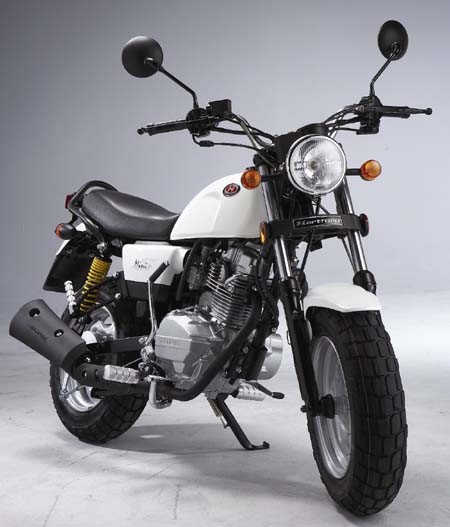
The second and third new models, according to the sales director, will be a classically-styled motorcycle (125cc/150cc) targeting the Asian market and a high-end cub (light commercial motorcycle) with 17-inch wheels featuring better riding comfort and fuel-efficiency for the Southeast Asia and Latin America markets.
"CPI has been focusing on the European market for a long time," Liu says, "but now we aim to go global by offering wide-ranging product lines. In addition, we also stepped up sales in Taiwan last year to further upgrade equipment utilization ratio to cut cost."
Niche Market Uniqueness
Hartford Industrial Co., Ltd., a subsidiary of the largest machining-center manufacturer in Taiwan and world-class machine-tool maker (She Hong Industrial Co., Ltd.), achieves competitiveness not only through top-quality manufacturing but also offering unique product mix.
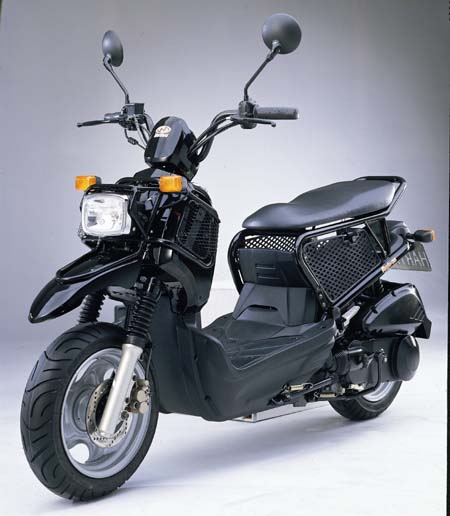
Established in 1995, Hartford began by making and selling motorcycle engines and PTWs. Its parent firm was a major motorcycle-parts producer on the island over 30 years ago.
Like most peers on the island that turn out mainly garden variety products, Hartford's sales plunged due to fierce underselling competition from emerging rivals several years ago, but setting up its R&D department about four years ago has helped Hartford achieve product differentiation: developing non-mainstream PTWs to target limited market niches.
Now Hartford offers a very attractive, unique product line, including the Mini 125/150, minibikes with powerful 125cc or 150cc CG engines for trendy ownership, convenient, easy riding; the Magic 125, a cargo-oriented scooter with extended footrest for easier cargo loading and bigger under-seat storage, which has also been a hot tuner bike for young owners worldwide; and the VR-200, a 200cc dirt bike.
Offering a unique product line has successfully set Hartford apart from the other major PTW brands in Taiwan, with the company's models becoming increasingly popular in especially big cities on the island. Globally, Hartford has effectively kept at bay fierce price-cutting competition to achieve steady sales growth in major markets as Europe (Spain, France, Italy, the U.K. etc.), South Korea, and Southeast Asia, with the firm boasting a 50:50 domestic/export sales ratio.
Craig Wang, export merchandiser at Hartford, points out that his company led many local counterparts to launch PTWs that equally appeal to both genders worldwide by offering designs, functions different from mainstream models.
Product Differentiation
"Hartford's goal is to produce something special," Wang claims, "and we try to launch a new model every year to uphold our 'special' brand image."
Adopting a practical approach to carve out market niches, Hartford produces engines that use popular Japanese engine parts. Such strategy, according to Wang, enables Hartford customers worldwide to easily find replacement parts where importers or dealers do not have sizable parts inventories, adding that such strategy is a better choice to develop niche products that are often sold in limited volumes.
To be more specialized and clearly differentiated from mainland Chinese rivals, Hartford is now developing a 400cc engine scheduled to be launched this year and a 250cc motor in 2009, with such power-plants to drive other special PTWs under development.
Hartford is also planning capacity expansion, and will move to a new plant soon. With about 80 staffers, Hartford runs a very streamlined, flexible operation.

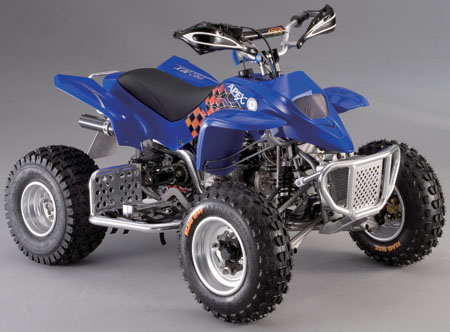
Kiddie-racer Focused
Another company who has found a niche market is Apex Motor Corp., a specialized developer and manufacturer of all terrain vehicles (ATVs) that was established in 2003.
Fully focused on its niche, Apex Motor, in 2007, turned out about 90% of its products targeted at top-end kiddie ATV racers or for under-12 riders, with engines displacements of 50cc, 70cc, 90cc and 100cc.
Robert Chen, Apex Motor president, proudly claims that his company's kiddie ATV racers are perennial winners at kiddie ATV events in North America, taking all the major championships since early this year, with all the racers on the tracks having been delivered in 2007.
Chen admits that the kiddie ATV racing market is limited in North America and some European nations as France and the U.K., which are also Apex Motor's major export outlets, but his company fares very well in the field thanks to mainly two factors.
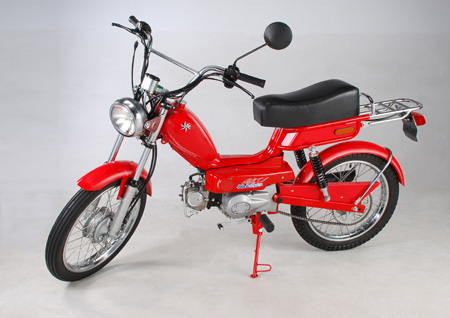
Winning Record
"The first is that our ATVs win kiddie races at major events, which helps to draw an expanding group of kiddie racers or their parents to buy the winning machines," the president says. "Nobody wants to lose in racing, and our ATVs are often deemed as a deciding factor."
Focusing on racing, according to Chen, Apex Motor supplies kiddie ATV racers of the highest quality, durability, and safety levels as well as reliability. The core advantage in its ATV racers, Chen says, lies in the self-developed and finely-tuned engines that fully satisfy customers in terms of delivering horsepower, torque, durability and reliability.
The president says that Apex Motor can achieve such outstanding mechanical merits as higher horsepower and torque because of upgraded continuous variable transmission (CVT) systems, modified cylinder heads, and high-performance exhaust etc. In addition, the front suspension on the kiddie ATV racers is duplicate of their larger counterparts in design and structure.
Another key factor behind Apex Motor's success is the streamlined, flexible production and seasoned staff. About one-fourth of the firm's 40 employees are R&D technicians, Chen says, most of whom are experienced, talented engineers with expertise in various fields.
Having gained a solid foothold in the kiddie ATV racing segment, Apex Motor now eyes an even-brighter future. Thanks to the firm's successful positioning strategy, Chen claims, Apex Motor is seen by American and European buyers as a skilled maker of small-batch, high-quality vehicles. That, the president stresses, is opening many windows of opportunity, including kiddie racing dirt bikes, bigger ATV racers for professionals, and contract production of high-end mopeds for the European market, big-displacement tricycles etc.




